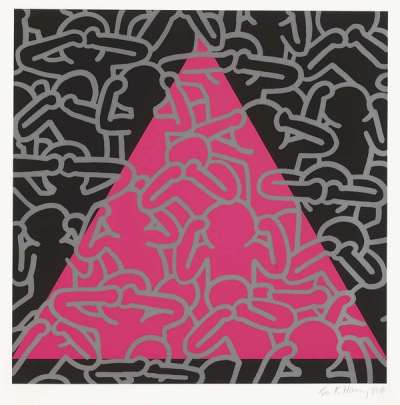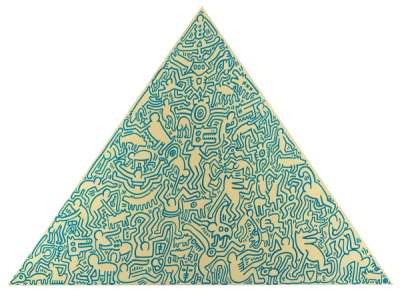
Pyramid (blue I)

Pyramid (blue I)
Signed Print
Keith Haring
£30,000-£45,000Value Indicator
$60,000-$90,000 Value Indicator
$50,000-$80,000 Value Indicator
¥280,000-¥410,000 Value Indicator
€35,000-€50,000 Value Indicator
$300,000-$440,000 Value Indicator
¥5,680,000-¥8,520,000 Value Indicator
$40,000-$60,000 Value Indicator
AAGR (5 years) This estimate blends recent public auction records with our own private sale data and network demand.
There aren't enough data points on this work for a comprehensive result. Please speak to a specialist by making an enquiry.
Medium: Screenprint
Edition size: 30
Year: 1989
Size: H 103cm x W 145cm
Signed: Yes
Format: Signed Print
TradingFloor
Track this artwork in realtime
Watch artwork, manage valuations, track your portfolio and return against your collection
Track auction value trend
Auction Results
| Auction Date | Auction House | Location | Hammer Price | Return to Seller | Buyer Paid |
|---|---|---|---|---|---|
| December 2024 | Dorotheum, Vienna | Austria | |||
| January 2024 | Phillips London | United Kingdom | |||
| October 2021 | Christie's New York | United States | |||
| May 2019 | Artcurial | France | |||
| November 2018 | Van Ham Fine Art Auctions | Germany | |||
| October 2014 | Phillips New York | United States | |||
| June 2014 | Phillips London | United Kingdom |
Meaning & Analysis
This signed screen print from 1989 is a limited edition of 30 from Keith Haring’s Pyramid series. Published as part of a set of three screen prints on anodized aluminum, Haring’s Pyramid was completed in 1989, the year before his tragic death by AIDS. This print features a multitude of Haring’s most iconic symbols rendered in heavy bright yellow lines and set against a flattened teal backdrop.
Assembled within a large pyramid, Haring’s energetic figures dance around the canvas in a celebration of life and emanate a sense of positivity amidst an extremely difficult time in the artist’s life. Haring used his art as a way to promote positivity across the world and stated ‘It should be something that liberates the soul, provokes the imagination and encourages people to go further. It celebrates humanity instead of manipulating it.’
Throughout Haring’s work, the pyramid was a common symbol used to refer both to the otherworldliness of antiquity and as an emblem of eternity. Pyramid also nods to the way in which Haring was inspired by Ancient Egyptian hieroglyphics throughout his career. The complex arrangement of many simplified figures and forms reflects Haring’s interest in how signs are used in many different cultures to concisely communicate multifaceted ideas.



